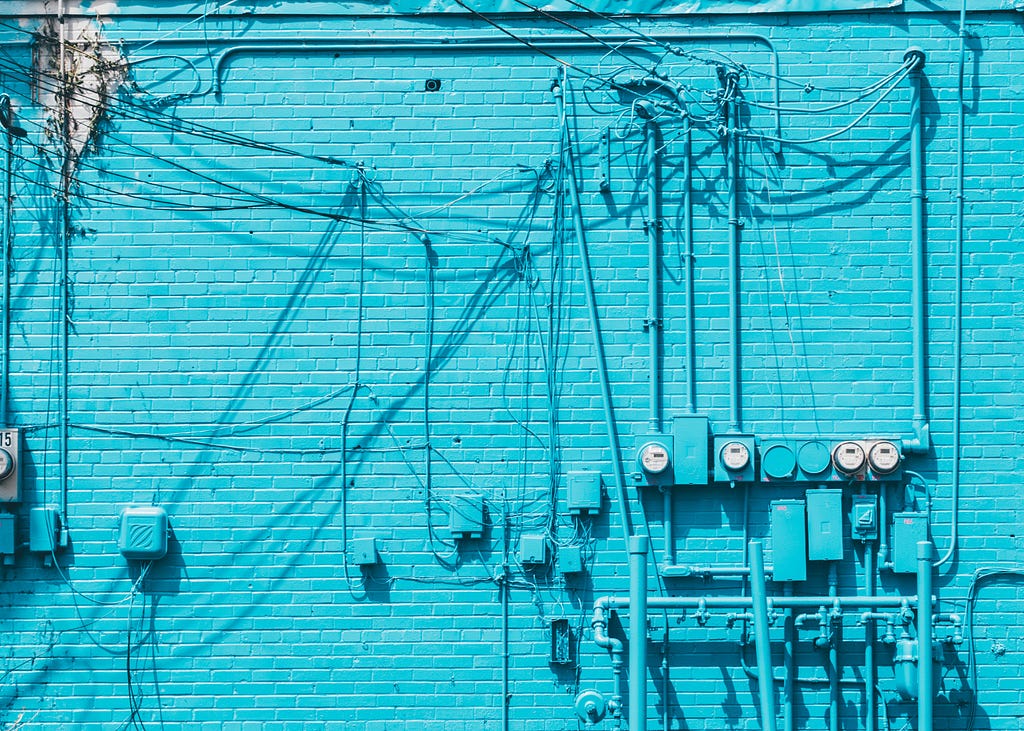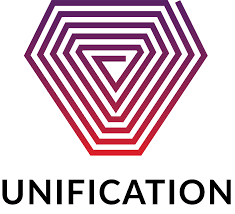Latest news about Bitcoin and all cryptocurrencies. Your daily crypto news habit.
 Smart Cities Today
Smart Cities Today
With more than half of the world population now residing in cities and their sizes ever increasing, the concept of Smart Cities has recently emerged in order to better manage the challenges of dense urban living. Smart Cities use a variety of inputs and sensors to collect, process and interpret data in order to manage assets and resources efficiently. Data can be collected from citizens, devices, and assets to monitor and manage systems as diverse as traffic and transportation systems, power plants, water supply networks, waste management, law enforcement, information systems, schools, libraries, hospitals, emergency services and electrical grids.
Over 700 cities today aspire to be Smart Cities, including Singapore, Barcelona, Stockholm, and New York City. Each of these are exploring different approaches to find solutions that best serve their citizens.
Current projects within Smart Cities include:
- Connecting waste bins that detect how full they are and communicate this to optimise waste management
- Buses, trains, and shared bicycle networks that are connected. Their locations can then be visualized upon a digital map of the city to make public transport easier.
- Connected CCTV cameras with the ability to search by objects throughout this city. For example, you could search for a misplaced red suitcase.
- E-governance, or the application of information and communication technology (ICT) for delivering government services such as communications and transactions from government-to-citizen (G2C), government-to-business (G2B), government-to-government (G2G), government-to-employees (G2E) as well as processes within the government framework.
- A trend towards “open data”. This refers to public policy that requires or encourages public agencies to release data sets and make them freely accessible. Typical examples are citywide crime statistics, city service levels, and infrastructure data.
The Problems that Smart Cities are Facing
FragmentationSmart Cities require integration of diverse hardware and software- from electric bikes to water meters, from traffic systems to connected rubbish bins. This can lead to a range of challenges, which are essentially symptoms of a common underlying problem- a lack of interoperability between data sharing systems.
As an aspiring Smart City, Barcelona has learnt this lesson the hard way. Antonio Conde, Cisco’s head of innovation in Spain has said in reference to Barcelona’s Smart City initiative,
“There are a lot of different silos, a lot of sensor vendors, a lot of different applications, and the first thing we need is a common layer,” says Conde. “The main lesson we have learnt in Barcelona is that the first thing you need to become a successful smart city is to start deploying a common platform.”
This lack of data standardisation for ease of interoperability equally affects enterprise as it does the Smart City and outsourcing the task to a third-party centralised company isn’t the answer either. As an example, for Barcelona,
“The aim is to create an open-source sensor network, with common standards, connected to a computer platform managed by the city itself. Barcelona wants to retain ownership of its own network, platform and data, and protect the data of its residents, yet ensure people and companies can access information that belongs in the public realm.”
While many enterprises currently offer out-of-the-box solutions to connect their service with the city, this leads to the city managing a portfolio of discrete systems. Barcelona’s chief technology officer and digital commissioner, Francesca Bria has described the problem by saying,
“City Hall ended up with a lot of data, with a lot of dashboards, and yet without any capacity to really use data and information to take better decisions for the public good, or give ownership of the data to citizens,” she says.
And there are a plethora of data provider types, including: public transport systems, electricity grids, water distribution systems, waste disposal services, weather data, traffic monitoring, locations of public services such as drinking fountains, public toilets, wifi networks, street webcam feeds, as well as warnings about power outages and emergencies such as earthquakes, traffic accidents, and fires.
That’s a lot of complexity to manage- and the point was to make urban life simpler!
Data Security and SovereigntyGathering the vast amounts of data associated with Smart Cities incurs another challenge. This is the potential dark side of losing control over this data concerning the city and its citizens. As Harvard University graduate student Ben Green says of the situation,
“And you have cities, which are caught in this devil’s bargain, where they feel they don’t have the resources to provide the services people need, and so they make these deals with tech companies that have money, but which in the long term might not be beneficial to either them or their residents.”
This data centralization has led to government firings over privacy losses in Toronto, hacking of public data and ransoms in Atlanta, and dismantling of city sensor networks in Seattle. Again, this is the dark side of data gathering. However, it is a data centralization problem. This is where a suitable blockchain offers an enlightened solution- by securing control of each data packet for its rightful owner. No more devil’s bargains!
From Fragmentation to Unification of Smart Cities
Smart Cities are complex enough already, so why would you want to throw a blockchain into the mix? Well, Smart City initiatives can benefit from the transparency, immutability, security, and sovereignty of data provided by a blockchain. Above all of these however, a blockchain can streamline the integrations between the diverse systems of municipalities and companies to resolve the fragmentation problem that they face. This leads to what could be called ‘Unified Smart Cities’. Let’s consider some tangible benefits of integrating Smart Cities with the Unification blockchain.
Unified Smart City Benefits: Interoperability
The challenge of integrating each new data provider into the system can be a major headache. Let’s say Metropolis wants to integrate Li.me Scooters and Bikes into its system so its citizens can see a real-time map of where these cool electric scooters are. Currently this requires significant time, work and cost to connect the unique technology stack of the city’s system with the unique technology stack of the scooter company. And Li.me’s scooters and bikes are already in over 100 cities- that’s a lot of integrations!
However, if Li.me makes a one-time integration to the Unification protocol through creation of a HAIKU, its scooter locations can be accessed by any of the 100 cities with its bikes that links in to Unification. Interconnectivity with a new city could be added with the flip of a switch through the BABEL interface.
Similarly, once Metropolis has its own HAIKU to connect with the Unification protocol, it is open to interoperability not just with Li.me scooters, but with all other data providers that are connected to the Unification protocol. This would again be as simple as flipping a switch within the city’s BABEL interface to turn on data sharing with say, the electric company.
This smooth interoperability is the primary advantage of Unifying a Smart City. But there are other benefits for ‘The New City on the Blockchain’…
Unified Smart City Benefits: Incentivization
Data sharing within Smart Cities can be encouraged through incentivization programs. On the one hand, Unification’s native UND token can be used to reward data providers such as a private company that gathers air quality data. This kind of transactional data sharing can encourage a wealth of new players to share the data they are already collecting, to benefit the city as well as perhaps research groups.
The interconnectivity offered by having a common hub for urban services as distinct as waste collection, public transport and electricity, however, can open the door for powerful new public incentive programs. For example, Unification’s identity verification system (UVCID) can facilitate citizens being rewarded for using public transport within the inner city as opposed to driving a car. This beneficial behaviour could be reflected in a reduction in their monthly electric bill for example. Similarly, having connected recycling bins allows for each household’s efforts in recycling to be rewarded- perhaps as a discount in their municipal rates bill, or in the form of discounted public transport.
In this way, the interconnectivity between services through using an identity common across them is unified by a common blockchain for the city. This system can incentivise Smart City citizens to be ‘Good Smartarians’.
Finally, any two Smart Cities connected to the Unification protocol may choose to share datasets with each other leading to new possibilities for learning. Also, by placing diverse datasets upon a unified platform, the door may be opened to multivariate analyses of traditionally non-correlated information (e.g. traffic and weather may not be traditionally compared but may indeed have relationships).
Unified Smart City Benefits: Transparency for Democracy- Public Blockchains for Public Governance
Two clear features that can be ensured by blockchains are transparency and immutability. These offer multiple benefits for a city that aims to show accountable and fair decision-making and allocation of resources. Some examples of where blockchains can help this include minimising fraud, lowering the cost of trust, and ensuring transparent use of public funds.
Minimising FraudA recent study has estimated 1 in every 250 online payments as fraudulent, with a total cost to businesses that will exceed $25 Billion by 2020. The irrefutable and irreversible tracking of identities and transactions secured by a blockchain can powerfully lower the incidence of fraud and its costs. The benefits of this apply to both the public and private sectors which naturally overlap throughout commerce.
Lowering the Cost of TrustApproximately 35% of global GDP is spent on trust through audits and verifications leads to 29 trillion dollars of economic opportunity being wasted at present. Given that a large portion of these pass through government audits, cross-referencing made possible by a standardized, interoperable ledger such as Unification may drastically reduce these costs.
Transparent Use of Public FundsThe use of public funds is often criticized as at best lacking transparency, and at worst being corrupt. Moving a city’s finances to a public blockchain therefore offers several advantages.
Firstly, the transparent use of public funds can reduce the opportunity for corruption traditionally afforded by obfuscation. For example, patterns of awarding public contracts to particular contractors in a biased and unfair way may be made patently evident when exposed to the light of a public ledger.
Secondly, opening up the transparency of how funds are allocated both across departments and to the public can lead to more informed decisions on budgeting. Simply put, greater transparency offers greater democracy.
Thirdly and finally, running finances over a blockchain may improve efficiency of accounting. Unfortunately, the complex and occluded nature of record keeping causes appreciable friction. Using an immutable public ledger therefore offers a unified platform for streamlining the accounting of a Smart City.
With so many tangible benefits, it’s a question of which will be the first Smart Cities on the Blockchain. With a unique permissioned/public hybrid blockchain model designed for government and enterprise applications, Unification is ideally suited to defragmenting Smart Cities. More than merely the technology however, the Unification Enterprise is up to the challenge of building products to solve the problems being faced on the streets.
DISCLOSURE: I am an advisor for Unification. To learn more about our technology and use cases, see Unification.com. And to learn more about how Unification can support your Smart City’s connectivity and citizen engagement, reach out to me here.
How Blockchains Will Unify Smart Cities was originally published in Hacker Noon on Medium, where people are continuing the conversation by highlighting and responding to this story.
Disclaimer
The views and opinions expressed in this article are solely those of the authors and do not reflect the views of Bitcoin Insider. Every investment and trading move involves risk - this is especially true for cryptocurrencies given their volatility. We strongly advise our readers to conduct their own research when making a decision.



